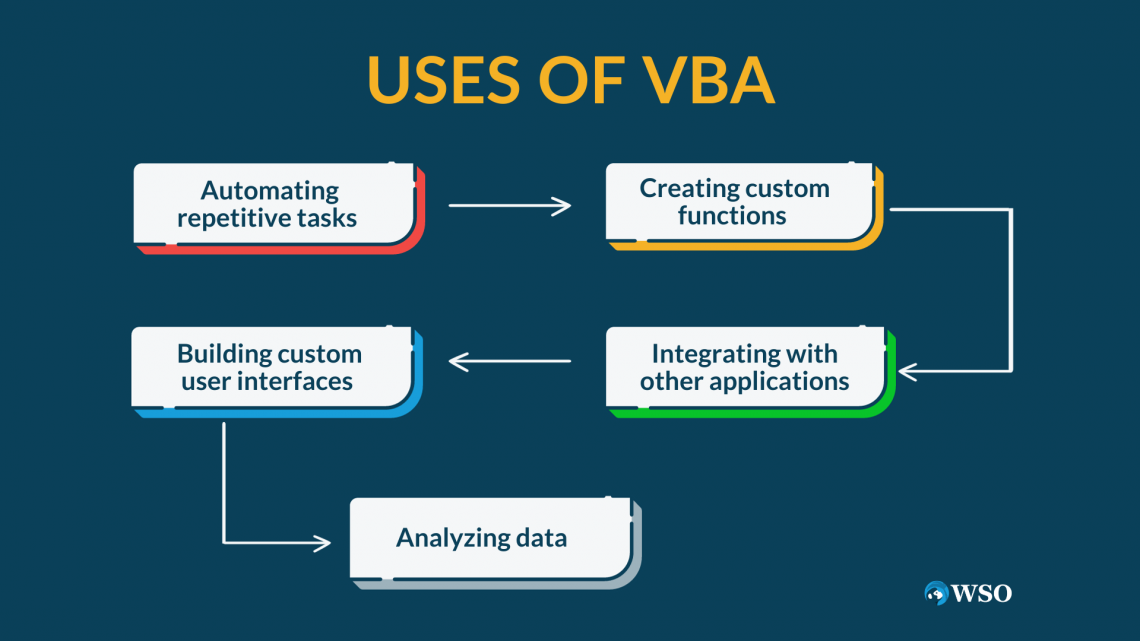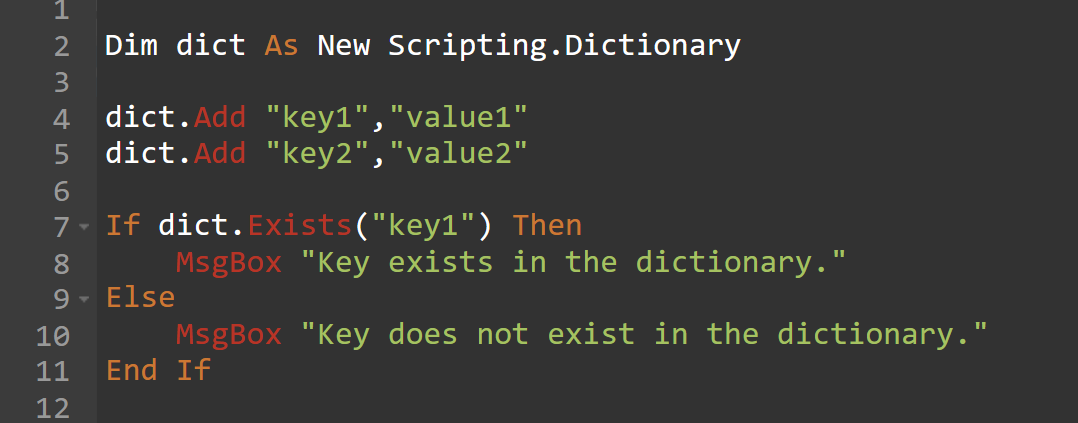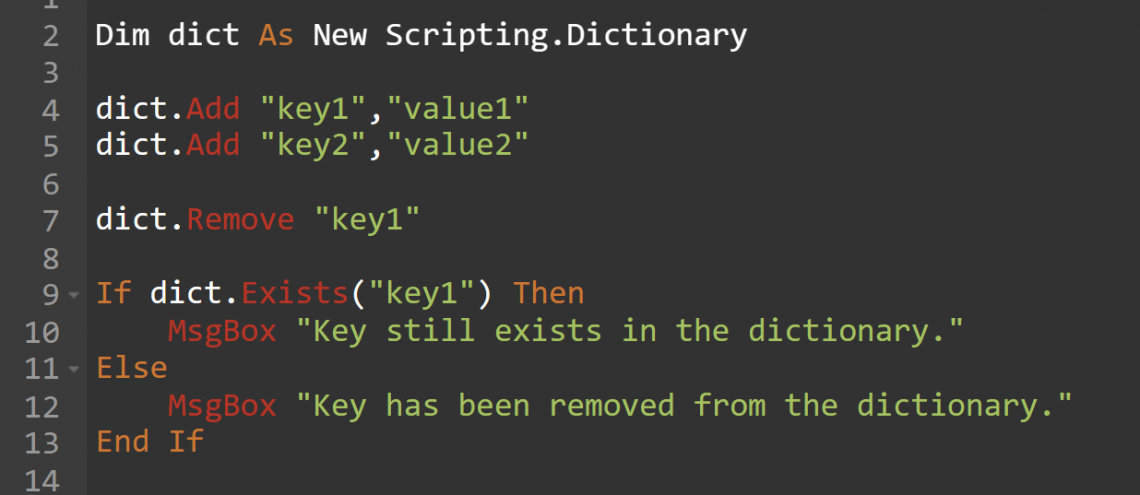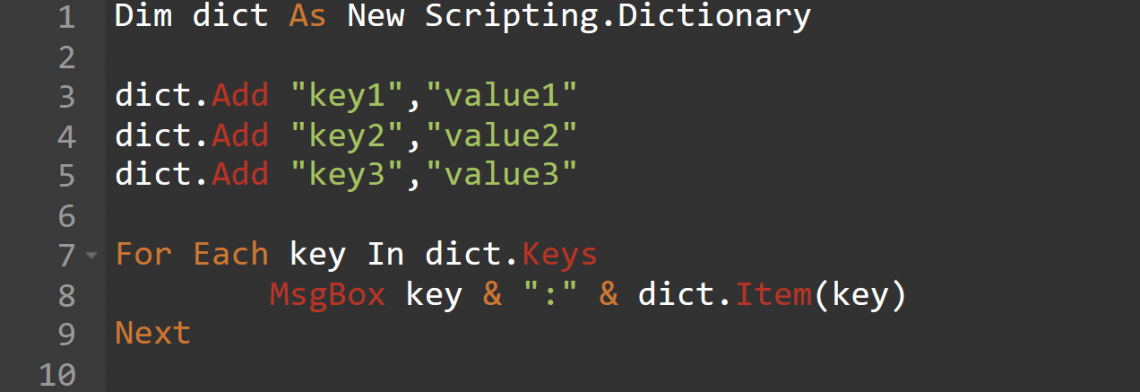VBA Glossary
A programming language used to create custom applications in Microsoft Office programs such as Excel, Word, and PowerPoint
What Is Visual Basic for Applications (VBA)?
VBA stands for Visual Basic for Applications. It is a programming language used to create custom applications in Microsoft Office programs such as Excel, Word, and PowerPoint.

It is based on the Visual Basic programming language, allowing users to write code to
- Automate tasks
- Create custom functions and procedures
- Build user interfaces within Office applications
Visual Basic for Applications was first introduced in 1993 as a programming language for Microsoft Office applications. It was based on the Visual Basic programming language, which Microsoft developed in the late 1980s.
VBA was designed to be a simple, easy-to-use programming language that non-programmers could use to automate tasks in Office applications. It was initially included in Office versions for Windows and later made available for Office versions for Mac as well.
In recent years, VBA has faced increasing competition from other programming languages and automation tools. Still, it remains a popular choice for many businesses and individuals due to its simplicity and integration with Office applications.
Key Takeaways
- VBA stands for Visual Basic for Applications, a programming language used in Microsoft Office programs like Excel, Word, and PowerPoint.
- VBA can automate repetitive tasks, create custom functions, build user interfaces, integrate with other apps, and perform data analysis.
- A VBA dictionary is an object to store key-value pairs, useful for data retrieval with unique keys.
Uses of VBA
There are many different ways that VBA can be used to automate and streamline tasks in Microsoft Office applications.

Common uses of VBA include:
- Automating repetitive tasks
It can be used to automate tasks that involve repeating the same actions or steps multiple times. For example, you can use VBA to create a macro that automatically formats a spreadsheet or creates a chart based on data in an Excel worksheet. - Creating custom functions
It can be used to create custom functions used in Excel or other Office applications. These functions can perform calculations or other tasks not available in the standard Office functions. - Building custom user interfaces
It can be used to create custom dialog boxes, user forms, and other user interface elements used to interact with Office applications. - Integrating with other applications
It helps access data from other applications or automates tasks in those applications. For example, you can use VBA to send emails from Outlook or to automate tasks in another application using its application programming interface (API). - Analyzing data
It can perform data analysis tasks such as sorting, filtering, and summarizing data in Excel or other Office applications.
Note
Overall, VBA is a powerful tool that can automate varied tasks in Microsoft Office applications, and it is widely used by businesses and individuals to streamline their workflows.
VBA Dictionary
In VBA, a dictionary is an object that lets you store a collection of key-value pairs. It is similar to an array, but instead of using an integer index to access the elements, you use a key to access the values.
Dictionaries are useful when storing data that needs to be accessed using a unique identifier, such as a user name or an ID number. To use a dictionary in VBA, you first need to create an instance of the ‘Scripting.Dictionary’ object.
- Open the Microsoft Visual Basic for Applications (VBA) editor by pressing Alt+F11 in Excel or opening the VBA editor in another Office application.
- Declare a variable to hold the dictionary object.
- Use the ‘CreateObject’ function to create an instance of the ‘Scripting.Dictionary’ object and assign it to the variable you declared in step 2.

Once you have created the dictionary object, you can use its methods and properties to add, remove, and manipulate the key-value pairs in the dictionary.
Methods and Properties
The ‘Scripting.Dictionary’ object in VBA includes the following methods and properties:
Methods:
- ‘Add’: Adds a key-value pair to the dictionary.
- ‘Clear’: Removes all key-value pairs from the dictionary.
- ‘Exists’: Determines if a key exists in the dictionary.
- ‘Item’: Acquires or sets the value associated with a key.
- ‘Keys’: Returns a collection of all the keys in the dictionary.
- ‘Remove’: Removes a key-value pair from the dictionary.
- ‘RemoveAll’: Removes all key-value pairs from the dictionary.
Properties:
- ‘CompareMode’: Gets or sets the dictionary's comparison mode used to compare keys.
- ‘Count’: Gets the number of key-value pairs in the dictionary.
You can add key-value pairs to the dictionary using the ‘Add’ method.

To retrieve a value from the dictionary, you can use the ‘Item’ property and specify the key.

You can also use the ‘Exists’ method to check if a key exists, the ‘Remove’ method to remove a key-value pair, and the ‘Count’ to get the number of key-value pairs in the dictionary.
Dictionaries are useful when storing data in a way that allows you to retrieve values using a unique key quickly. They are often used in VBA to store user names, ID numbers, and other information that needs to be accessed using a unique identifier.
In a VBA dictionary, you can store any data as the values associated with the keys. For example, you can store numbers, strings, arrays, objects, and other data types as values in the dictionary.
Note
The keys must be unique and are typically used to identify the values stored in the dictionary. The keys can be any data type used as an index, such as strings, integers, or objects.
Here is an example of a VBA dictionary that stores a variety of data types as values:

In this example, the dictionary stores a string, an integer, an array, and an object as values associated with the keys "key1", "key2", "key3", and "key4" respectively.
You can use the ‘TypeName’ function to determine the data type of a value in the dictionary.

A VBA dictionary allows you to store various data types and quickly retrieve the values using unique keys.
Advantages and Disadvantages of VBA dictionary
A few advantages of using Scripting.Dictionary objects in VBA are:
- Efficient
Dictionaries are efficient for storing and accessing data because they use keys to identify the values, allowing faster retrieval than a linear search through an array. - Flexible
It can store various data types as values, including objects and arrays. - Easy to use
It provides several methods and properties that make it easy to manipulate the dictionary and access the stored data. - Integrates with VBA
It is part of the Microsoft Scripting Runtime library, which is included with all versions of Office, so it is easy to use in VBA programs.
However, there are some potential disadvantages to using Scripting.Dictionary object in VBA:
- Requires additional library
It is part of the Microsoft Scripting Runtime library, which means you need to include this library in your VBA project to use it. - No built-in sorting
It does not provide any built-in methods for sorting the key-value pairs, so you would need to implement your sorting algorithm or use a different data structure to sort the data. - No guarantee of order
It does not guarantee the order of the key-value pairs, so the sequence in which you add them to the dictionary may differ from the sequence in which they are stored.
Example of using the VBA Dictionary
Examples of how you can use the ‘Scripting.Dictionary’ object in VBA are described below:
1. Storing data in a dictionary

Here, we create a dictionary and add two key-value pairs. We then retrieve the values using the ‘Item’ property and the keys "key1" and "key2".
2. Checking the existence of a key in the dictionary

In this example, we use the ‘Exists’ method to check if the key "key1" exists. If it does, a message box is displayed; otherwise, a different message is displayed.
3. Removing a key-value pair from the dictionary

We use the ‘Remove’ method to remove the key-value pair with the key "key1" from the dictionary. We then use the ‘Exists’ method to check if the key still exists in the dictionary.
4. Looping through the keys and values in a dictionary

Here, we use the Keys property to loop via all the keys in the dictionary and the ‘Item’ property to retrieve the values associated with those keys.
5. Storing an object in a dictionary

You can see here that we create an object and store it as a value associated with the key "key1". We can retrieve the object from the dictionary using the ‘Item’ property.
6. Storing an array in a dictionary

In this last example, we create an array and store it as a value associated with the key "key1". We can then retrieve the array from the dictionary using the ‘Item’ property.
Alternative to VBA dictionary
One alternative to the VBA dictionary is the Dictionary object in the Microsoft .NET Framework. The .NET Framework Dictionary object is similar to the VBA Scripting.Dictionary object, but it has some additional features and capabilities.
For example, the .NET Framework Dictionary object supports more data types as keys, allows you to specify the initial capacity and load factor of the dictionary, and provides methods for thread-safe operations.
To use the .NET Framework Dictionary object in VBA, you can use the CreateObject function to create an instance of the System.Collections.Generic.Dictionary(Of TKey, TValue) object, where TKey and TValue are the types of keys and values in the dictionary, respectively.
Here's an example of how to create a .NET Framework dictionary object in VBA:

You can then use the Add method to add key-value pairs to the dictionary, the Item property to retrieve the value associated with a particular key, and the Remove method to remove a key-value pair from the dictionary in the same way as with the VBA Scripting.Dictionary object.
Note
Other data structures available in VBA can be used to store and manipulate key-value pairs, such as collections, arrays, and user-defined types. Again, you can choose the data structure that best fits your needs based on the specific requirements of your project.
| VBA dictionary | Microsoft .NET Framework dictionary |
|---|---|
| It provides more robust error handling, as it can detect and handle errors such as adding a duplicate key or retrieving a non-existent key. | It provides additional features and capabilities compared to the VBA dictionary, such as support for more data types as keys, specifying the dictionary's initial capacity and load factor, and methods for thread-safe operations. |
Another alternative is a VBA collection. It is an object that stores a set of elements, where each element is a key-value pair. You can use a VBA collection to store and manipulate a group of related data, such as a list of names or a set of customer records.
To create a VBA collection, you can use the New Collection function to create an instance of the Collection object. Here's an example of how to do this:

Once you have created the collection object, you can use its methods and properties to add, remove, and manipulate the elements in the collection.
| VBA Dictionary | VBA Collection |
|---|---|
| It is an object that stores key-value pairs, where the keys are strings, and the values can be of any data type. | It is an object that stores a set of elements, where each element is a key-value pair. |
| It is implemented using a hash table data structure, allowing fast addition, retrieval, and removal of elements. | It is implemented using an array data structure, which may be slower than a hash table for adding, retrieving, and removing elements. |
| It is case-sensitive, meaning that the keys "key1" and "Key1" are considered different. | It allows any data type as a key and is case-insensitive, meaning that the keys "key1" and "Key1" are considered the same. |
| It does not preserve the order of the elements. | It preserves the order in which the elements were added. |
| It provides more robust error handling, as it can detect and handle errors such as trying to add a duplicate key or retrieve a non-existent key. | It does not provide robust error handling and may generate run-time errors in situations such as trying to add a duplicate key or retrieve a non-existent key. |




or Want to Sign up with your social account?